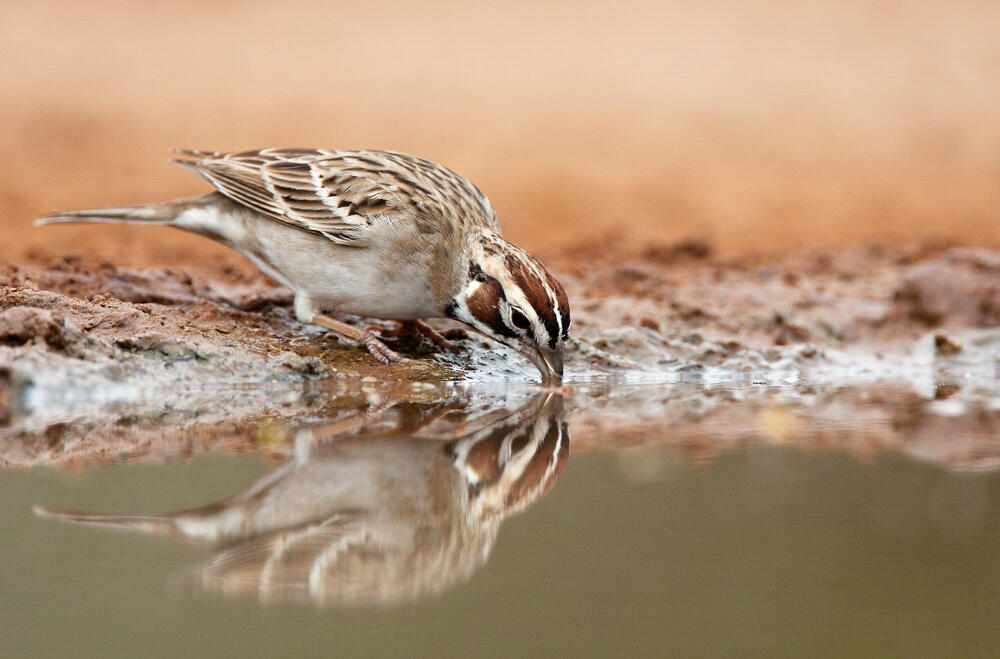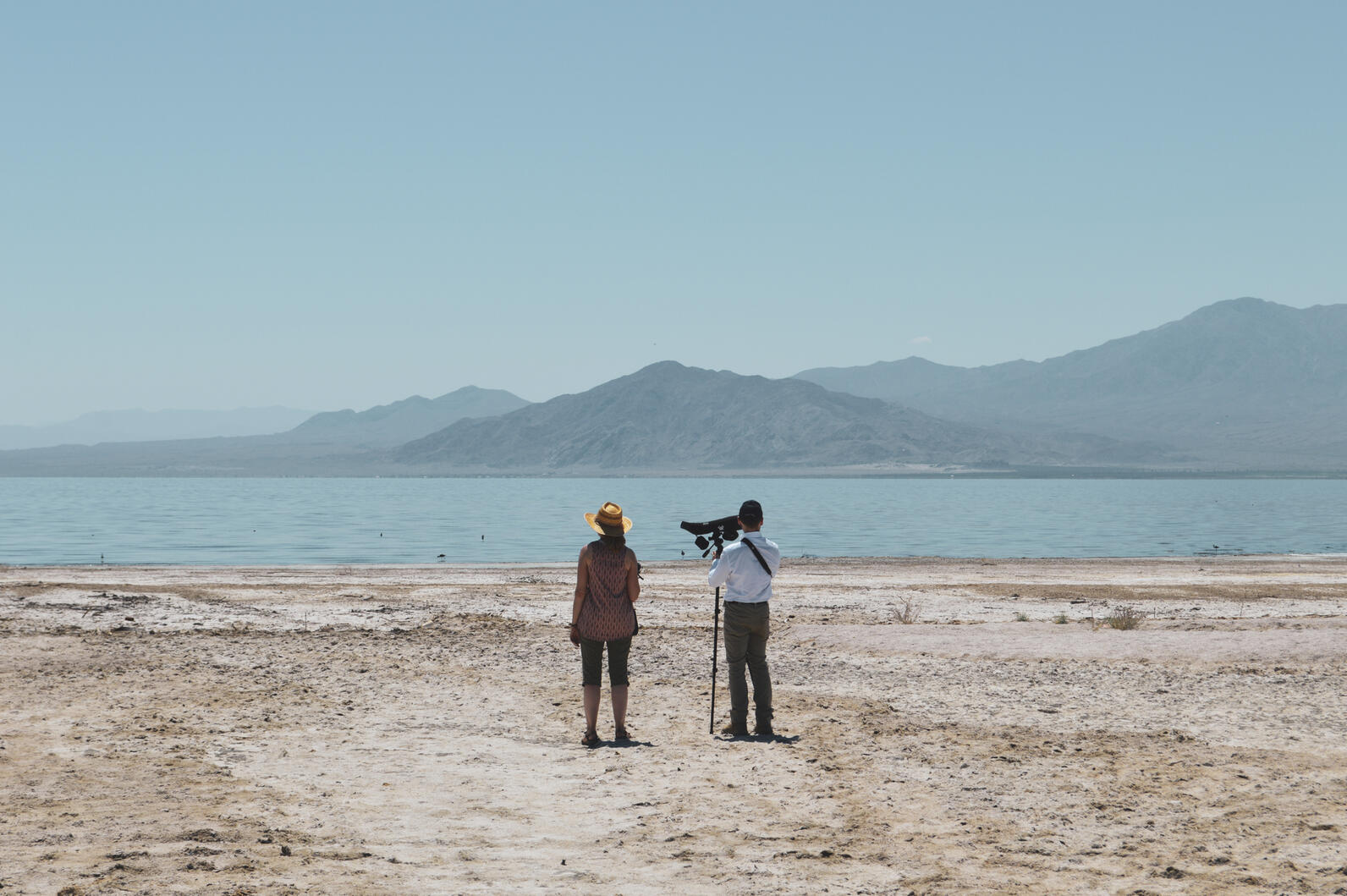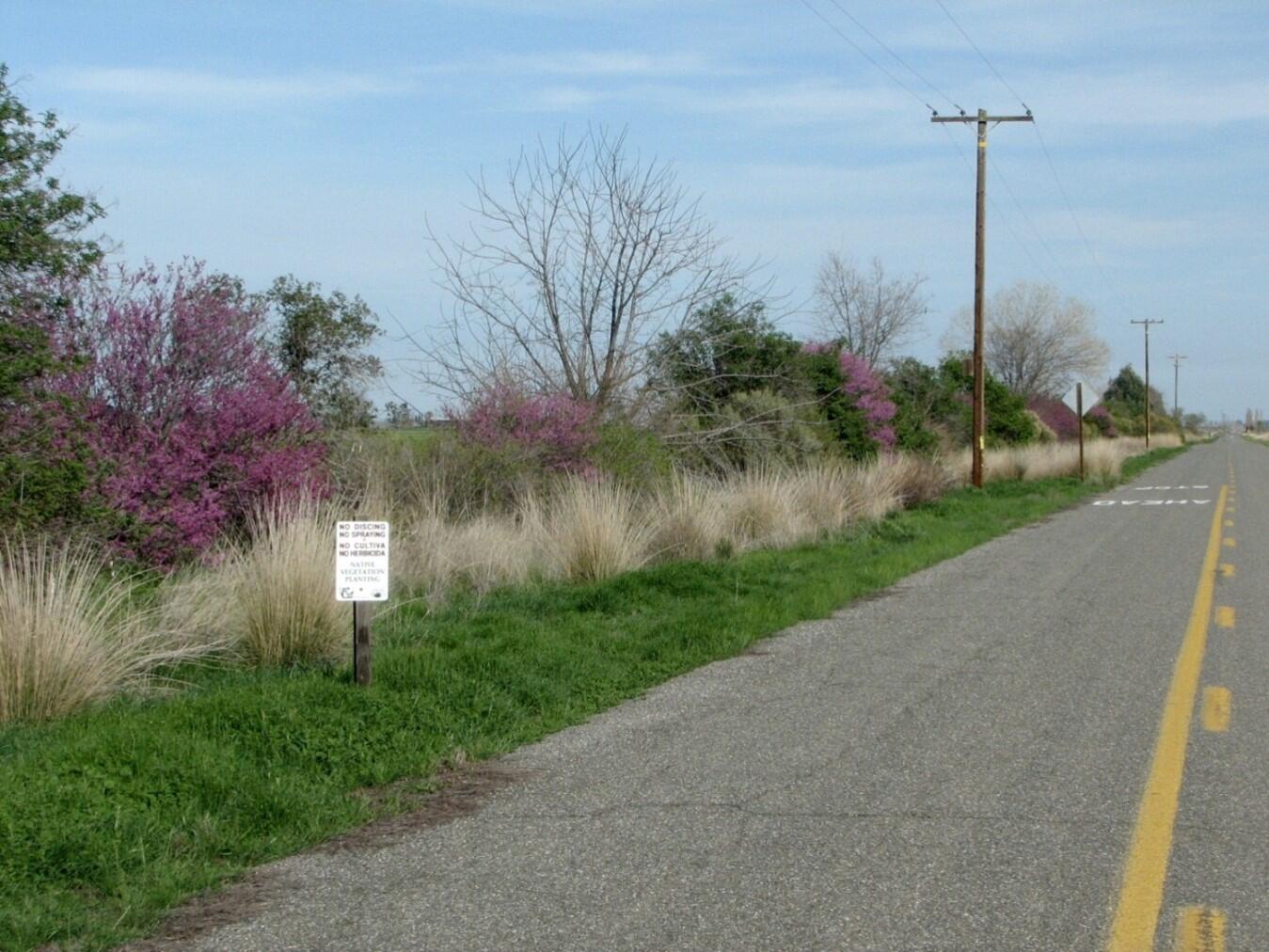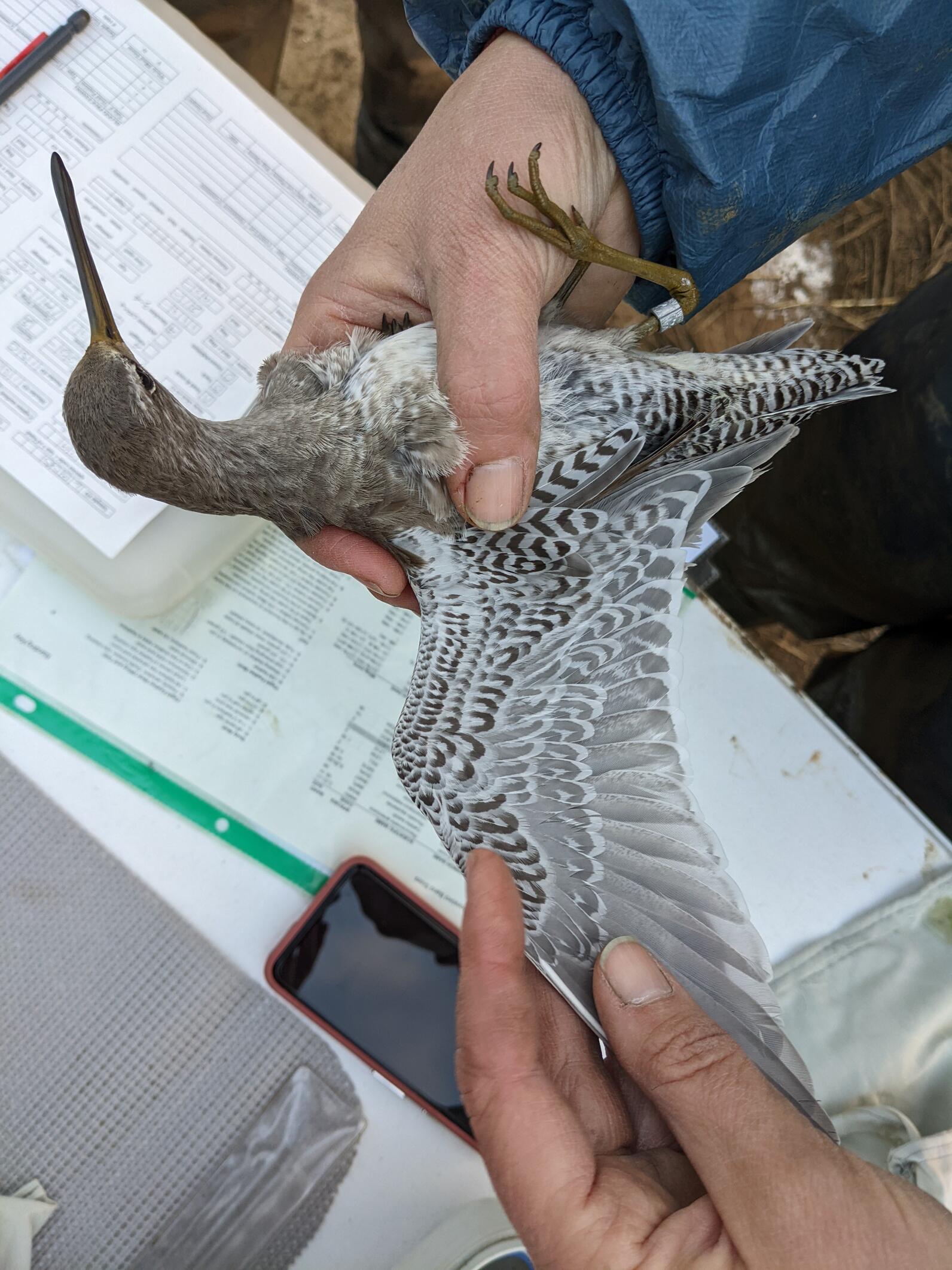Dark-eyed Junco
Latin: Junco hyemalis
From fires in the Sierra to clouds of windblown dust at the Salton Sea, the effects of drought driven by climate change are impo
Peregrine Falcon Photo: Jim Verhagen
California’s Mediterranean climate has the most variable weather of any U.S. state, so it’s no stranger to catastrophic droughts and disastrous floods. Still, even in a drought-prone region, recent years have been exceptional – the result of natural climate cycles colliding with a warming planet. From fires in the Sierra to clouds of windblown dust at the Salton Sea, the effects of drought driven by climate change are impossible to ignore.
The latest science confirms that climate change has arrived and that we are in the middle of a megadrought. In August 2021, a report by the United Nations’ Intergovernmental Panel on Climate Change found that climate change is quickening and intensifying. Even in a best-case scenario, global temperatures will likely rise by 1.5 degrees Celsius by 2040.
In May, 2021, the U.S. Environmental Protection Agency (EPA) declared that the nation has entered uncharted territory in which climate effects are more visible, changing faster and becoming more extreme. Temperatures are rising, snow and rainfall patterns are shifting, and more extreme climate events –like heavier rainstorms and record high temperatures –are already happening. Some, like hotter forest fires, are directly related to historic drought conditions gripping the U.S. West.
The consequences for both California’s avian and human populations are likely to be devastating. Simply put, climate change is the number one threat to the survival of our nation’s birds. In 2019, the National Audubon Society released Survival by Degrees, a study examining the impacts of various climate change scenarios on North America’s birds. Under a worst-case rise of 3.0 C, up to two-thirds of bird species face extinction, including from specific factors like extreme heat and fires. The report came on the heels of another by Cornell’s Lab of Ornithology that the continent has already lost an estimated three billion birds since 1970 due to habitat loss and climate change.
Audubon's Bird and Climate Report

Just 200 years ago, the Central Valley was a vast, seasonal wetland teeming with birdlife. Only about five percent of California’s historic wetlands have survived two hundred years of colonization and intensive agriculture. Those that remain are heavily managed, for the most part receiving water allocations from the state water system together with California’s cities and farms. In addition, some agricultural lands, like flooded rice fields, serve as “surrogate wetlands,” providing vital habitat to migrating waterfowl and wading birds.
However, as of August 2021, the state’s largest reservoirs, Lake Shasta and Lake Oroville, were respectively at 35 and 24 percent of capacity, with proportionate impacts on water deliveries to farms, cities, and wildlife refuges in the Central Valley and elsewhere in California. Our last remaining Central Valley wetlands are expected to receive less than 60 percent of their usual water supply. Winter flooded rice fields, which provide half of the winter waterfowl food supply, are expected to be reduced by 75 percent. The importance of keeping water flowing in the Central Valley is difficult to overstate. Tens of millions of birds depend on the area’s rivers and wetlands as they migrate through an otherwise arid region.
Flooded habitat provided by the region’s farms, refuges, and other managed areas supports between 5-7 million waterfowl and 350,000 shorebirds each year. That’s over 60 percent of the total population along the Pacific Flyway and 20 percent of the nation's waterfowl population. Migrating landbirds also rely heavily on Central Valley stopovers; an estimated 65 million birds pass through during fall migration, along with 48 million each spring. Those numbers include a quarter of all North American Tree Swallows and a whopping 80 percent of Lawrence’s Goldfinches.

Years of fire suppression in western forests and California’s years-long drought have created a trifecta of conditions perfect for explosive wildfires: extreme heat, low humidity, and abundant, desiccated vegetation fire needs to spread. In fact, the state’s worst-ever fires, the 2020’s August Complex Fire at more than a million acres and the 2021 Dixie fire, at more than 960,000, both dwarf all previous fires in both size and ferocity.
The increasingly apocalyptic wildfires of the past five years have cost California dozens of lives and billions of dollars, though the toll on birds is somewhat harder to quantify. While most birds can easily escape advancing flames, extensive wildfires across the western United States in 2020 are suspected at least in part for causing a mysterious die-off of migrating birds in the Southwest. Fire can cause birds to migrate to winter habitats before their bodies have stored enough fat for the arduous journey and thick smoke may disorient some and kill others outright.
While western forests – and their birds – evolved with fire as a natural part of the ecosystem, vital in maintaining diverse habitats, no analog exists for the megafires of the past decade. Experts expect that temperatures in the Sierra will rise by some 10 degrees Fahrenheit over the next century and that the snowpack to melt almost a month earlier. By the end of the century, that could double the acreage burned by wildfires each year.

California’s largest lake is located in one of its most arid regions. The Salton Sea formed in 1905 when an irrigation canal from the Colorado River broke and flooded a historic lakebed. The breach was fixed within a few years, but the Salton Sea, fed by agricultural runoff, remained and became a vital stopover for migrating birds that no longer found wetlands available farther north.
But the Sea is evaporating quickly.
Drip irrigation, and the diversion of the water saved to thirsty San Diego, means that not enough water is flowing to the Sea to maintain it. The retreating shoreline has exposed thousands of acres of playa, or dry lake bed, which contains a century’s worth of agricultural fertilizers, pesticides, heavy metals, and salts. Those contaminants, blown airborne by desert winds, waft towards surrounding towns as choking dust, causing high rates of respiratory illness in some of California’s most disadvantaged communities. Meanwhile, as the surface area of the lake decreases, its salinity increases, killing the fish on which many species of migratory birds depend.
While limited restoration work on the Salton Sea is beginning to proceed – after years of delays – the Sea’s future in a warming climate remains very much in question. Audubon is working with the state of California and partner organizations to maintain the Sea as an asset both for wildlife and for surrounding communities.
While there’s no denying the gravity of the climate crisis, it’s not too late to limit warming and stave off the worst impacts of climate change. With rapid action, we can still limit warming to 1.5 degrees and push lawmakers to enact water policy good for both humans and birds as we all adapt to this warmer, drier new normal.
Audubon and our many partners are working to complete science to better understand how drought impacts birds, we are working with land managers to roll out emergency drought relief funding to create bird habitat, and we are advocating for long-term policy and infrastructure solutions that will make California, our communities and our birds more resilient to this new climate reality.
We are in uncharted territory. Birds are on the move to escape the smoke and stress. What will happen to them and the habitat they need to survive?
Vital protections are needed for wetlands that depend on groundwater under the Sustainable Groundwater Management Act
Audubon science finds that two-thirds of North American birds are at risk of extinction from climate change.
Audubon California has begun the planning phase for the restoration and enhancement of the newly emerging Bombay Beach Wetland, located by the town of Bombay Beach at the Salton Sea.
Funding to address threat to 1.6 million people and 300 species of birds
More than 400 species of birds come to the Salton Sea in California.

Restoring habitat in a landscape as highly managed as California’s often means working with pieces of land that are marginal – sometimes literally. Continuing a tradition of working with private landowners to restore habitat along farm edges, Audubon is leading a project – together with River Garden Farms, River Partners, the Center for Land Based Learning, Yolo County Resources Conservation District, and US Fish and Wildlife Service -- to install hedgerows along a one and a half mile section of road at River Garden Farms in Yolo County, along a canal near the Sacramento River. This bird-friendly habitat restoration recently installed a carefully designed suite of native plants, such as coyote brush, black willow, and toyon, along two, 1.6-mile-long linear strips along County Road 98A near Knights Landing, California.
While hedgerows provide a number of important benefits to farmers, they can be invaluable to wildlife. They provide cover and food for pollinator insects and birds, riparian habitat when planted alongside streams (or in this case, a canal), and create wildlife corridors between habitat areas. They also prevent the drift of wind-blown pesticides or weed seeds between fields, filter water and reduce erosion. Our hope for this project is to create a habitat connection and wildlife movement corridor between the Sacramento River and the massive area of protected wetlands on Roosevelt Ranch. The overall project intent is to provide enduring wildlife habitat, with a special focus on increasing riparian bird species abundance and diversity while connecting different habitat areas, an important part of making wildlife more resilient in a changing climate.

Despite small breeding colonies in neighboring states, Tricolored Blackbirds are California's blackbird. Over 95 percent of the global population resides in the state. While anyone ever seeing a teeming flock of “trikes” feeding or in flight might have a hard time believing, the bird was listed as threatened under the California Endangered Species Act in 2019. However, Audubon research indicates that populations may be beginning to recover.
As recently as 1930, millions of Tricolored Blackbirds darkened the skies near Central Valley wetlands. As marshes were drained, the birds moved onto agricultural land, especially wheat fields. Farmers typically harvest their crop before nestlings have fledged, even wiping out the young of entire colonies in a single day as harvesting machinery moves across an occupied field. In surveys conducted from 2005 through 2009, less than half of colonies escaped destruction of their nesting areas.
For the past eight years, Audubon has worked together with farmers, the California Department of Fish and Wildlife, Natural Resources Conservation Service and other partner organizations to locate colonies and encourage growers, through financial incentives, to postpone harvests until nestlings had fledged. In a study recently published in the journal Western Field Ornithologists, we found that this public-private partnership has been highly successful: from 2015 to 2022, nearly 100 percent of nesting attempts on agricultural land were conserved, and the number of birds nesting in grain fields increased by as much as 100,000. The reported increase in the population was confirmed during the most recent stateside survey in 2022. This survey is a coordinated voluntary effort, involving many chapter members across the state, to survey suitable habitat areas for birds resulting in a snapshot in time that tells us approximately how many birds are in the population. Protection of the most at-risk nesting sites is contributing to a bump in Tricolored Blackbird populations statewide, but innovative conservation efforts must be continued if the species is to recover fully.

It takes more work than you might think to measure the health of a Long-billed Dowitcher. Not only do you have to be up before dawn, sloshing through muddy rice fields to set up mist nets in the dark, but once the target birds are caught, you have to move fast. You have three minutes to draw a blood sample before stress hormone levels rise, throwing off measurements of their baseline condition.
Prior research suggests Long-billed Dowitcher and other shorebirds are under a lot of stress. According to a landmark 2019 study by the Cornell Lab of Ornithology, shorebird populations have declined steeply over the past 50 years, by more than a third since 1970. Audubon is working with Point Blue Conservation Science and The Nature Conservancy, as part of the Migratory Bird Conservation Partnership to study the impact of years of drought on migratory shorebirds in the Central Valley.
The Central Valley is an ideal place to monitor shorebird populations. This 600-mile-long cleft through California’s center acts as a funnel for a wide range of birds migrating along the Pacific Flyway, including millions of waterfowl and hundreds of thousands of shorebirds, many of which spend the winter in the valley’s temperate climate. This year’s heavy rains notwithstanding, the region has also been hard hit by recent drought, shrinking wetlands at vital wildlife refuges and on private lands. While we don’t know exactly how hard the drought has been on shorebirds, we do know that shorebirds face habitat deficits even in non-drought years, especially in fall and spring, when rice fields and wetlands are largely dry. Audubon works as part of the Migratory Bird Conservation Partnership and many other partners, including the California Department of Fish and Wildlife and the California Rice Commission, to fill this habitat gap facing shorebirds.
While there’s no workaround for predawn hours and muddy slogs through flooded rice fields, newer technology allows us to tag these shorebirds with tiny trackers that communicate with the North American Motus Wildlife Tracking System, a network of receiving towers that get their name from the Latin word for “motion.” This is the same technology that powers Audubon’s Bird Migration Explorer, and it allows us to track where shorebirds are finding habitat… and where they’re not. Another vital piece to understanding drought affects shorebirds is to learn how the birds use existing protected lands at state wildlife areas. In coordination with California Department of Fish and Wildlife staff at state wildlife areas, we are conducting monthly shorebird surveys to understand the contribution of these protected areas to shorebird habitat use.
The study is funded by the California Department of Fish and Wildlife.
Our newsletter is fun way to get our latest stories and important conservation updates from across the state.
Help secure the future for birds at risk from climate change, habitat loss and other threats. Your support will power our science, education, advocacy and on-the-ground conservation efforts.
Join the thousands of Californians that support the proposed Chuckwalla National Monument.
Our newsletter is fun way to get our latest stories and important conservation updates from across the state.
Help secure the future for birds at risk from climate change, habitat loss and other threats. Your support will power our science, education, advocacy and on-the-ground conservation efforts.
Join the thousands of Californians that support the proposed Chuckwalla National Monument.